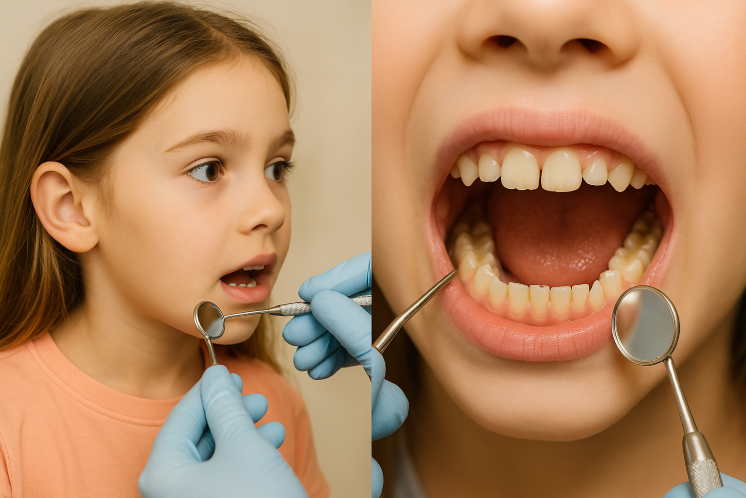When it comes to your child’s smile, early detection can make all the difference. Early orthodontics, also known as Phase 1 treatment or interceptive orthodontics, focuses on guiding jaw growth, creating space for permanent teeth, and correcting harmful oral habits before they turn into bigger problems.
At Designing Smiles in Roseville, MN, we believe that identifying orthodontic issues early can prevent more complex treatment later—and may even improve your child’s overall airway health.

Early orthodontics focuses on children ages 6–10 who still have a mix of baby and permanent teeth. The main goal is to guide proper jaw development, ensure there’s enough space for adult teeth, and fix any bite or functional issues before they get worse.
Some of the benefits of early treatment include:
– Reducing the risk of severe crowding or bite problems later
– Guiding facial growth and jaw alignment
– Improving speech and chewing function
– Supporting better breathing and airway health
If you notice any of the following, it may be time for an orthodontic evaluation:
If your child’s teeth appear cramped or stacked on top of each other, it’s a sign that there isn’t enough room in the jaw for proper alignment. Early intervention can create space and prevent future extractions.
Baby teeth that fall out too soon or stay in too long can cause problems with permanent teeth alignment. A dentist can evaluate if intervention is needed.
Consistent mouth breathing or snoring may indicate airway obstruction, which can affect facial growth and sleep quality. Early orthodontics, combined with our airway-focused approach, can help address these concerns.
If your child struggles to bite into food or chew evenly, it could point to bite issues such as crossbites, underbites, or overbites. Early treatment can prevent these problems from worsening.
Long-term habits like thumb sucking or pacifier use can push teeth forward and narrow the palate, leading to speech and bite issues.
A lisp or difficulty pronouncing certain sounds may be linked to bite or jaw misalignment. Correcting these issues early can improve both oral function and speech development.
Early orthodontic treatment can provide life-changing benefits, including:
– Shorter or simpler orthodontic treatment as your child grows
– Lower risk of permanent tooth extractions or jaw surgery
– Better airway development for improved breathing and sleep
– Boosted confidence and better oral function
At Designing Smiles, we take a functional and airway-focused approach to orthodontics. Rather than simply straightening teeth, we focus on:
– Promoting healthy jaw and facial growth
– Using functional appliances and palatal expanders to guide development
– Supporting better breathing, sleep, and long-term oral health
Our expertise in early orthodontics and functional treatments allows us to help kids grow into healthier smiles without unnecessary extractions.
The American Association of Orthodontists recommends that children receive their first orthodontic evaluation by age 7. Even if your child doesn’t need treatment immediately, early monitoring ensures that any developing issues are caught in time.
If you’ve noticed any of these signs in your child, early orthodontic treatment could be the key to a healthier, more confident smile.
Contact Designing Smiles today to schedule a friendly consultation and see how our airway-focused, functional orthodontic approach can benefit your child.
Q: What age should my child see an orthodontist?
A: Age 7 is recommended for the first evaluation, even if no issues are visible.
Q: Will early orthodontic treatment hurt?
A: Early orthodontics uses gentle, kid-friendly appliances and is typically very well tolerated.
Q: How long does Phase 1 treatment last?
A: Most early orthodontic treatments last 6–18 months, depending on the child’s needs.
